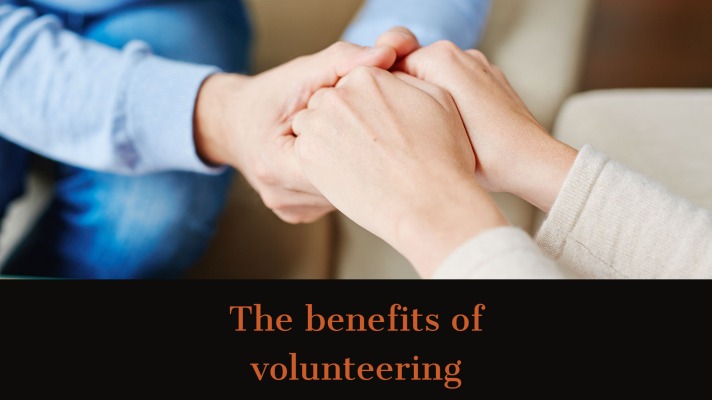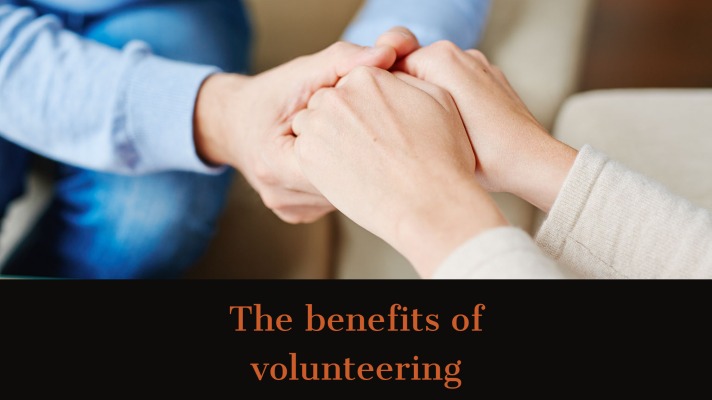
Volunteering has benefits not for all ages, and the advantages vary greatly depending on the individual’s age and developmental stage. This exploration delves into the unique ways volunteering impacts children, adolescents, young adults, middle-aged adults, and seniors. We’ll look at the diverse benefits, potential challenges, and the crucial role of age-appropriate opportunities in fostering meaningful experiences.
From boosting social skills in kids to promoting physical and mental well-being in adults, volunteering offers a spectrum of advantages. However, it’s vital to recognize that different age groups have varying needs and limitations. This article explores these nuances, offering insights into tailoring volunteering opportunities to best suit each demographic.
Volunteering and the Spectrum of Ages
Volunteering, in its broadest sense, encompasses a wide range of activities aimed at benefiting others and contributing to the community. From assisting at local food banks to mentoring young people, countless individuals find fulfillment in giving back. The motivation behind volunteering varies, from a desire to make a difference to fulfilling personal needs or pursuing professional development. The scope of volunteering extends far beyond the realm of formal organizations, encompassing informal acts of kindness and support within families, neighborhoods, and schools.Volunteering isn’t confined to any single age group; it’s a practice that can and should be embraced across the lifespan.
This understanding acknowledges the diverse developmental stages and capacities of individuals at various ages, allowing for a variety of roles and contributions. The key lies in tailoring opportunities to match the abilities and interests of each age group, fostering a sense of belonging and purpose for all.
Volunteering Opportunities for Different Age Groups
Volunteering opportunities can be customized to meet the needs and capacities of individuals across the lifespan. Young children, for example, can contribute to their communities by helping with simple tasks, like collecting donations or organizing community events. Older adults often possess a wealth of experience and wisdom that can be channeled into mentorship programs, community gardening projects, or tutoring initiatives.
Teens and young adults are frequently drawn to environmental conservation, animal welfare, and social justice initiatives, allowing them to develop valuable skills and a sense of social responsibility. The focus is on recognizing the unique strengths each age group brings to the table.
Youth Volunteering: A Foundation for Civic Engagement
Young people, particularly adolescents and teens, can participate in meaningful volunteering activities that foster a sense of civic responsibility and personal growth. Youth-focused volunteer programs often center on environmental conservation, assisting in animal shelters, or providing support to younger children. These experiences are valuable in developing social skills, teamwork, and a deeper understanding of community needs.
Adult Volunteering: Leveraging Life Experiences
Adults bring a wealth of experience and skills to the table, making them valuable assets in diverse volunteer settings. They often take on leadership roles, mentoring younger individuals, or managing volunteer projects. Adult volunteers can contribute to initiatives such as fundraising, organizing events, and providing technical support, enriching the communities they serve with their practical experience.
Senior Volunteering: Sharing Wisdom and Experience
Older adults often possess a wealth of knowledge and wisdom gained through years of experience. Senior volunteers can excel in roles such as mentoring, tutoring, or providing emotional support to others. They can also be instrumental in community outreach programs, sharing their experiences and insights with younger generations. The wisdom and compassion that seniors offer are invaluable assets to any community.
Volunteering, while offering amazing personal growth, isn’t always a perfect fit for everyone. Sometimes, even seemingly beneficial activities, like helping out at a local shelter, might not be suitable for individuals with specific physical limitations. For example, if you’re concerned about your child’s safety while volunteering, a recent recall of Fischer-Price sleeper toys might be something to consider before bringing little ones to a community event.
Fischer Price sleeper toy recalled what to know This highlights that the benefits of volunteering aren’t universally applicable, and careful consideration is key, especially when it comes to children’s well-being.
Benefits of Volunteering for Different Age Groups
Volunteering offers a wealth of benefits for individuals of all ages, fostering personal growth, community engagement, and a sense of purpose. Beyond the obvious contributions to the community, volunteering provides unique opportunities for learning, skill development, and social interaction. This exploration delves into the diverse advantages of volunteering for children, adolescents, young adults, middle-aged adults, and seniors, highlighting the positive impact on various aspects of their lives.Volunteering transcends age barriers, offering a platform for individuals to contribute their time and talents to causes they care about.
The benefits, while often similar in nature, manifest differently depending on the life stage and experience of the volunteer.
Benefits of Volunteering for Children and Adolescents
Volunteering for children and adolescents provides a crucial foundation for developing important life skills and values. Participating in community service activities nurtures empathy, compassion, and a sense of responsibility towards others. Young people gain valuable insights into the needs of their community and develop a sense of belonging and purpose.
- Developing empathy and compassion: Children and adolescents who volunteer often have increased opportunities to interact with individuals from diverse backgrounds, fostering understanding and empathy. Working alongside others with different experiences broadens their perspectives and teaches them about different ways of life. For example, helping at a local food bank can reveal the struggles faced by those in need, instilling a sense of compassion and encouraging them to seek solutions to social problems.
- Building social skills: Volunteering provides a platform for young people to interact with peers and adults in a structured setting. This interaction helps them develop communication, teamwork, and leadership skills. For instance, working in a group project for a local environmental organization can teach them how to collaborate effectively and achieve common goals.
- Gaining a sense of purpose: Volunteering can provide a sense of accomplishment and personal fulfillment for young people. By contributing to a cause they care about, they discover their capacity to make a positive impact on the world around them. Helping at a local animal shelter can instill a sense of pride and satisfaction, contributing to their self-esteem and sense of purpose.
Volunteering, while often touted as a fantastic experience for everyone, isn’t always a perfect fit for all ages. Just as dolls with disabilities gaining popularity show a growing recognition of diverse needs , volunteering can be incredibly challenging or even overwhelming for some, particularly younger individuals. Ultimately, finding the right kind of volunteer opportunity that aligns with individual capabilities and interests is key for a positive experience.
Benefits of Volunteering for Adults
Volunteering in adulthood offers a wide range of benefits, varying depending on the life stage and personal goals. From young adults seeking to gain experience to middle-aged adults looking for fulfillment, and seniors seeking continued engagement, volunteering can significantly impact their lives.
- Young Adults: Volunteering provides valuable experience for young adults seeking to build their resumes, explore potential career paths, and develop new skills. It can enhance networking opportunities and introduce them to various professional fields. For instance, assisting at a political campaign can provide practical experience in public speaking, communication, and organization.
- Middle-aged Adults: Volunteering can offer middle-aged adults a sense of purpose and fulfillment beyond their professional lives. It can provide an outlet for creativity, problem-solving, and social interaction. For example, mentoring students can provide a rewarding experience, while contributing to a local historical society allows for the application of learned knowledge and skills.
- Seniors: Volunteering offers seniors a chance to remain active, engaged, and connected to their community. It can provide a sense of purpose, combat isolation, and maintain physical and mental well-being. For instance, volunteering at a senior center can provide companionship and social interaction, fostering a sense of belonging.
Potential Physical and Mental Health Advantages
Volunteering can significantly contribute to both physical and mental well-being for adults. Engaging in meaningful activities and connecting with others can reduce stress, improve mood, and enhance overall health.
- Stress reduction: Volunteering can act as a healthy stress reliever. Engaging in activities that benefit others can divert attention from personal anxieties and provide a sense of accomplishment. For example, helping at a soup kitchen can shift focus from personal stressors and promote a sense of gratitude.
- Improved mood and reduced loneliness: Volunteering provides opportunities for social interaction and connection, combating feelings of loneliness and isolation. This interaction with others can improve overall mood and well-being. For instance, tutoring students can provide a sense of accomplishment and connection, reducing feelings of isolation.
Comparison of Volunteer Benefits Across Age Groups
| Age Group | Potential Benefits | Specific Examples |
|---|---|---|
| Children/Adolescents | Empathy, social skills, sense of purpose, personal growth | Helping at a local animal shelter, assisting at a food bank, participating in environmental cleanup drives |
| Young Adults | Career exploration, skill development, networking opportunities, personal growth | Assisting at a political campaign, volunteering at a non-profit organization, tutoring students |
| Middle-aged Adults | Fulfillment, purpose, creativity, social interaction | Mentoring students, volunteering at a historical society, helping at a community garden |
| Seniors | Staying active, engagement, combating isolation, physical/mental well-being | Volunteering at a senior center, assisting at a library, participating in community events |
Challenges and Considerations for Different Age Groups
Volunteering offers numerous benefits, but the path to participation isn’t always straightforward. Different age groups face unique challenges and limitations when considering volunteer opportunities. Recognizing these hurdles is crucial for designing effective programs that cater to diverse needs and maximize the impact of volunteer efforts. Understanding these considerations ensures that everyone can contribute meaningfully, regardless of age.Volunteering is not a one-size-fits-all activity.
Successful volunteer programs need to take into account the varying capacities and circumstances of individuals. This includes the unique challenges presented by different age groups, and how these affect their ability to commit time, manage physical demands, and navigate social situations. Recognizing and addressing these differences is key to creating meaningful and sustainable volunteer experiences for all.
Time Commitment Challenges
The availability of time varies significantly across age groups. School schedules, work commitments, and family responsibilities can drastically limit the time a person can dedicate to volunteering. Teenagers, for instance, may have limited free time due to extracurricular activities and homework. Middle-aged individuals may face conflicting commitments with careers and childcare obligations. Seniors, on the other hand, might have more flexibility, but also potential health concerns that could limit their ability to volunteer for extended periods.
Finding age-appropriate volunteer opportunities that fit within the available time constraints is essential for successful participation.
Physical Ability Considerations
Physical limitations can also play a role in limiting volunteer opportunities. Young children may lack the stamina for physically demanding tasks. Older adults may have limitations due to age-related physical conditions. Opportunities requiring extensive lifting, prolonged standing, or strenuous activity may not be suitable for all age groups. Designing age-appropriate tasks that match physical capabilities is crucial to avoid injury and ensure that volunteers feel supported and capable.
Social Skill Considerations
Social skills can also impact the suitability of a volunteer role. Young people may be less experienced in navigating complex social situations. Older adults might need support in adapting to new technologies or communicating with diverse groups. Volunteering opportunities that encourage interaction and communication with others should be carefully tailored to match the social comfort levels of the participants.
Providing appropriate training and mentorship can be beneficial in fostering confidence and enhancing social skills.
Importance of Age-Appropriate Opportunities
Age-appropriate volunteer opportunities recognize the varying needs and capabilities of different age groups. For example, a younger volunteer might be well-suited to assisting with tasks like sorting materials or helping with basic administrative duties. Older volunteers, with their life experience and wisdom, might excel in mentoring or providing guidance to others. Tailoring roles to individual abilities and interests ensures a more enriching and successful experience for everyone.
Role of Mentors and Support Systems
Mentors and support systems play a crucial role in helping individuals overcome challenges and enhance their volunteer experience. Mentors can provide guidance, encouragement, and support in navigating the complexities of volunteer work. Support systems can help volunteers overcome personal challenges and maintain motivation. These systems are particularly important for those who may face unique hurdles due to their age or circumstances.
Table of Challenges and Potential Solutions
| Age Group | Challenges | Potential Solutions |
|---|---|---|
| Children (6-12) | Limited time commitment, potential for short attention spans, developmental limitations in social interactions. | Short-term, age-appropriate tasks (e.g., assisting with crafts, sorting items), opportunities with peers, clear instructions, supportive mentors. |
| Teenagers (13-19) | Balancing school, extracurricular activities, and social life, potentially limited physical stamina. | Flexible scheduling, tasks aligned with interests, group volunteering, opportunities for skill development, supportive peer mentors. |
| Young Adults (20-35) | Balancing careers and personal lives, potential for burnout with high-demand roles. | Opportunities for short-term commitments, opportunities for skill development, clear expectations, support networks, flexible schedules. |
| Middle-aged Adults (36-55) | Balancing work and family responsibilities, potential physical limitations. | Flexible scheduling, tasks suited to abilities, support for childcare, opportunities for skill development. |
| Seniors (56+) | Health concerns, potential mobility limitations, adjusting to new technologies. | Opportunities with low physical demands, support in using technology, flexibility in schedules, training and resources, pairing with younger volunteers. |
Impact of Volunteering on Societal Wellbeing: Volunteering Has Benefits Not For All Ages
Volunteering, a cornerstone of community engagement, transcends individual acts of kindness and significantly contributes to the overall well-being of society. It fosters a sense of shared responsibility and strengthens social bonds, ultimately creating a more vibrant and resilient community. This impact is multifaceted, influenced by the diverse experiences and contributions of individuals across different age groups.Volunteering isn’t merely about charitable giving; it’s about building bridges between generations and fostering mutual support.
The diverse skills and perspectives brought by volunteers of all ages create a dynamic exchange that enriches the community as a whole. The positive ripple effect extends beyond immediate beneficiaries, creating a sustainable cycle of giving and receiving that benefits everyone.
Intergenerational Learning and Collaboration
Volunteering provides a unique platform for intergenerational learning and collaboration. Young volunteers often gain valuable life skills and mentorship from older generations, while older volunteers can benefit from the fresh perspectives and energy of younger participants. This exchange is not simply one-sided; both groups learn and grow from each other’s experiences and wisdom.
- Mentorship opportunities abound. Experienced professionals, retirees, and older volunteers can offer guidance and support to younger individuals, fostering their personal and professional growth. In turn, younger volunteers can bring new ideas, technological skills, and a fresh perspective to their mentors.
- Shared experiences foster empathy and understanding. Working alongside individuals from different generations creates a richer understanding of diverse perspectives and experiences. This fosters tolerance and empathy within the community.
- Cultural understanding is enhanced. Through volunteering, individuals from different backgrounds interact, fostering a greater understanding of different cultures and values. This shared experience helps bridge cultural divides and promote unity within a community.
Examples of Support Among Age Groups, Volunteering has benefits not for all ages
Volunteering provides a plethora of opportunities for different age groups to support each other. A great example is a senior center partnering with a local school. Seniors can volunteer to tutor students in subjects like history or art, sharing their knowledge and life experiences. Simultaneously, students can assist seniors with technology, helping them stay connected with the digital world.
This mutual support strengthens the bonds between generations and creates a more inclusive community.
- Environmental projects: Younger volunteers can help with planting trees or cleaning up parks, while older volunteers can offer expertise in gardening or conservation techniques.
- Community gardens: Older volunteers can contribute their knowledge of gardening, while younger volunteers can bring energy and enthusiasm to maintain and grow the garden.
- Library programs: Older volunteers can help with story time and book recommendations, while younger volunteers can assist with technology-related tasks or organize events.
Positive Social Impact Across Communities
Volunteering creates a positive social impact by fostering a sense of community and shared responsibility. It enhances the overall well-being of diverse communities. For example, in a community with a high elderly population, volunteers can help seniors maintain their independence by providing transportation, companionship, or assistance with daily tasks. This creates a more inclusive environment where everyone feels supported and valued.
| Age Group | Societal Impact | Examples |
|---|---|---|
| Youth (13-18) | Increased civic engagement, development of social skills, and contribution to community projects. | Participating in environmental cleanups, assisting at local food banks, or mentoring younger children. |
| Young Adults (19-35) | Enhancement of professional skills, contributing to organizational efficiency, and promoting community awareness. | Organizing community events, fundraising for local charities, or volunteering at hospitals or shelters. |
| Middle-Aged Adults (36-55) | Sharing experience, knowledge, and time with younger generations. | Tutoring students, volunteering at schools, or supporting community organizations. |
| Seniors (56+) | Providing guidance, wisdom, and mentorship, promoting intergenerational connections. | Volunteering at senior centers, providing companionship to isolated individuals, or participating in storytelling programs. |
Examples of Age-Appropriate Volunteering Opportunities
Volunteering is a powerful way for individuals of all ages to make a difference in their communities. It fosters personal growth, builds social connections, and strengthens the fabric of society. Recognizing that different age groups possess unique capabilities and interests, tailored volunteering opportunities are crucial for maximizing the impact and enjoyment of this valuable experience. This section delves into age-appropriate volunteering options, highlighting activities that align with the developmental needs and capacities of children, adolescents, and adults.
Volunteering Opportunities for Children
Children can contribute to their communities in meaningful ways, often through simple yet impactful tasks. These activities not only teach valuable life skills but also instill a sense of responsibility and civic engagement. Their involvement often centers around tasks that are accessible and age-appropriate.
- Helping at local animal shelters: Children can assist with feeding animals, cleaning cages, or walking dogs. This experience provides opportunities to develop empathy and care for animals. Supervision is crucial for younger children.
- Supporting local libraries: Children can help with organizing books, shelving, or assisting younger patrons. This fosters a love for reading and encourages interaction with community resources.
- Assisting with community gardening projects: Children can participate in planting seeds, weeding, watering, or harvesting fruits and vegetables. This promotes environmental awareness and connection to nature.
- Collecting and sorting donations for charities: Sorting and organizing donations at a local food bank or charity can teach children about the importance of giving back and the practical application of community service.
Volunteering Opportunities for Adolescents
Adolescents are transitioning into adulthood, and volunteering provides an excellent platform to develop leadership skills, gain experience, and enhance their social awareness. These opportunities should be more complex than those for younger children.
- Tutoring younger children: Adolescents can tutor children in subjects they excel in, fostering their own understanding of the subject matter and providing valuable support to younger learners.
- Assisting at local sports events: They can help with registration, setting up equipment, or managing volunteers. This can be a rewarding experience for those interested in sports or teamwork.
- Helping with youth groups or camps: Providing support to younger children in various activities can develop leadership skills and promote positive social interactions.
- Working with environmental organizations: Adolescents can participate in cleanup drives, tree planting, or environmental education programs, nurturing their environmental consciousness.
Volunteering Opportunities for Adults
Adults have a wide range of options to contribute to their communities, from highly specialized roles to more general community support. Adult volunteering opportunities are diverse and allow for greater flexibility and responsibility.
- Specialized skills: Professionals can volunteer their expertise in areas such as medical, legal, or technological assistance. This type of volunteering provides invaluable support to organizations in need.
- Community outreach programs: Adults can support various community initiatives, such as food drives, disaster relief, or senior centers. These opportunities offer flexible time commitments and various avenues for contribution.
- Mentorship programs: Experienced adults can mentor young people, sharing their knowledge and life experiences. This type of volunteering builds relationships and helps guide the next generation.
- Fundraising and advocacy: Adults can contribute to the financial and social support of organizations through fundraising activities or advocacy efforts.
Age-Appropriate Volunteering Opportunities – Table
| Age Group | Volunteering Opportunity | Description |
|---|---|---|
| Children (6-12) | Animal Shelter Helper | Assisting with feeding, cleaning, and walking animals. |
| Children (6-12) | Library Assistant | Organizing books, shelving, and assisting younger patrons. |
| Adolescents (13-18) | Tutoring | Tutoring younger children in specific subjects. |
| Adolescents (13-18) | Youth Camp Assistant | Supporting younger children in camp activities. |
| Adults | Medical Volunteer | Providing support to medical clinics or hospitals. |
| Adults | Community Garden Volunteer | Supporting community garden maintenance and activities. |
Considerations for Volunteer Management

Managing a diverse volunteer force requires a nuanced approach that recognizes the varying needs and preferences of different age groups. Effective volunteer management strategies should not only streamline operations but also foster a welcoming and engaging environment for everyone involved. A tailored approach that respects individual differences is crucial for maximizing volunteer contributions and fostering a positive experience for both the volunteers and the organization.Volunteer management strategies need to adapt to the diverse needs of different age groups.
Volunteering definitely has benefits, but it’s not always a good fit for everyone. For example, some people might find that the demands of a physically demanding volunteer position aren’t ideal if they have specific health needs, like managing a medical device such as a Medtronic implantable insulin pump – which you can learn more about in this helpful article medtronics implantable insulin pump what you might like to know.
Ultimately, the right volunteering opportunity depends on individual circumstances and needs, and that’s something to consider when choosing. Finding a role that suits your abilities and health is key to a positive experience.
Generational differences in communication styles, preferred learning methods, and expectations regarding the volunteer experience require careful consideration. Understanding these nuances is key to building strong relationships and maximizing volunteer impact.
Tailored Training Programs for Volunteers of Different Ages
Volunteer training programs must be adaptable to the specific learning styles and preferences of various age groups. Younger volunteers might benefit from interactive workshops and online modules, while older volunteers may prefer more structured sessions with opportunities for hands-on practice. The choice of training materials and delivery methods should reflect the diverse learning needs of the volunteers. Consider offering different formats, such as online courses, in-person workshops, or one-on-one mentoring.
Effective Communication Strategies for Different Age Groups
Effective communication is vital for engaging volunteers of different ages. Younger volunteers may respond well to informal communication channels like social media and instant messaging, while older volunteers may prefer more traditional methods like email and phone calls. Clear and concise communication is essential for all age groups. Using a variety of communication methods, such as email, text messages, phone calls, and online forums, can enhance volunteer engagement.
Tailoring communication to specific age groups can significantly improve understanding and responsiveness.
Creating a Welcoming and Inclusive Environment
Creating a welcoming and inclusive environment is paramount for fostering a positive volunteer experience. Volunteers of all ages should feel valued and respected. Recognizing individual contributions, offering opportunities for recognition and feedback, and promoting a sense of community among volunteers are crucial elements of an inclusive environment. Incorporating diverse perspectives into volunteer tasks and decision-making processes can further enhance the sense of inclusion.
Managing Volunteers Across Different Age Groups
| Age Group | Management Strategy | Implementation Steps |
|---|---|---|
| Youth (16-25) | Flexible schedules, collaborative projects, opportunities for leadership development | Offer flexible hours, involve them in planning and decision-making processes, provide mentorship opportunities, create peer-to-peer support groups. |
| Adults (26-55) | Structured roles, clear expectations, opportunities for professional development | Define clear roles and responsibilities, provide opportunities for skill-building workshops, offer professional certifications, acknowledge their experience and expertise. |
| Seniors (56+) | Recognition for experience, accessible locations, flexible hours | Create opportunities for sharing their life experiences, prioritize accessibility in locations, accommodate different physical needs, ensure that communication is clear and easy to understand. |
Volunteering and Community Development
Volunteering isn’t just about helping individuals; it’s a powerful force for positive change at the community level. It fosters a sense of belonging, strengthens social networks, and addresses crucial needs within neighborhoods. This vital contribution often transcends individual acts of kindness, becoming a catalyst for community development.Community development thrives on the collective effort of its members. Volunteering, especially when diverse age groups participate, provides a crucial bridge between different needs and perspectives, enriching the entire community.
Intergenerational collaboration in volunteering projects can be particularly effective in creating a supportive and inclusive environment for everyone.
Intergenerational Connections and Community Cohesion
Intergenerational volunteering fosters a sense of shared purpose and mutual respect. Older volunteers, with their life experience and wisdom, can mentor younger volunteers, while younger volunteers bring fresh ideas and energy. This exchange of knowledge and perspectives can lead to stronger community bonds and a greater understanding between different age groups. For example, a senior citizen teaching a child how to garden cultivates not only a love for nature but also a shared experience that transcends generations.
This kind of interaction is invaluable for community cohesion, reducing age-based divisions and promoting a more unified sense of belonging.
Designing Age-Appropriate Volunteering Projects
Successful community projects recognize the diverse needs and capacities of different age groups. Children might excel at tasks like organizing neighborhood clean-ups or creating community gardens. Youth might be motivated by environmental initiatives or local historical preservation projects. Adults can contribute their skills in leadership, project management, or fundraising. Seniors, with their experience, can be instrumental in mentoring younger volunteers, sharing their knowledge, and supporting local initiatives.
This approach ensures that volunteering is not just a beneficial experience but also an engaging one for all participants.
Collaboration in Community Projects
Creating opportunities for volunteers of all ages to collaborate in community projects is essential for building a strong and vibrant community. This could involve organizing intergenerational workshops, assigning age-appropriate tasks within larger projects, or simply encouraging interaction and communication between different age groups. Successful collaboration often involves clearly defined roles and responsibilities, open communication, and a shared understanding of the project’s goals.
Impact of Volunteering on Community Development Across Age Groups
| Age Group | Community Impact | Examples |
|---|---|---|
| Children (5-12) | Developing a sense of civic responsibility, fostering environmental awareness, and improving local aesthetics. | Organizing neighborhood clean-ups, creating community gardens, participating in local art projects. |
| Youth (13-18) | Gaining valuable life skills, contributing to community initiatives, and developing leadership potential. | Environmental campaigns, historical preservation projects, mentoring younger children, supporting local charities. |
| Adults (19-64) | Providing leadership and management skills, contributing to fundraising and project management, offering specialized expertise. | Leading community initiatives, coordinating volunteer efforts, providing support to community organizations. |
| Seniors (65+) | Sharing life experiences, mentoring younger volunteers, and providing invaluable support to local organizations. | Tutoring younger children, leading intergenerational workshops, assisting in community centers, providing expertise in local history. |
Last Word

In conclusion, volunteering’s impact transcends age, enriching both individuals and communities. While the benefits are substantial, carefully considering the specific needs and limitations of different age groups is crucial. By designing age-appropriate opportunities and implementing supportive strategies, we can maximize the positive contributions of volunteers of all ages. Ultimately, this exploration underscores the importance of inclusivity and adaptability in fostering meaningful volunteer experiences.




